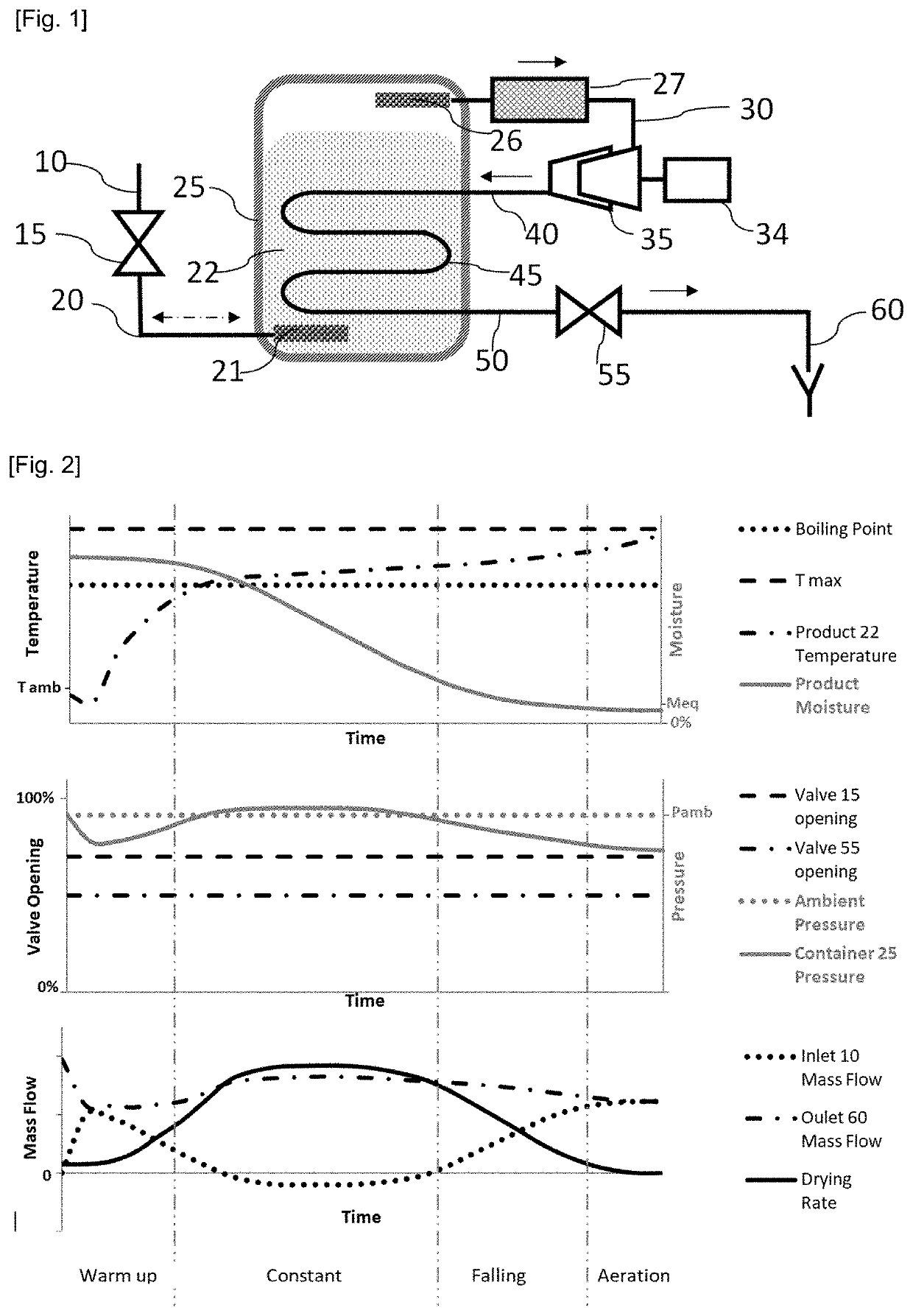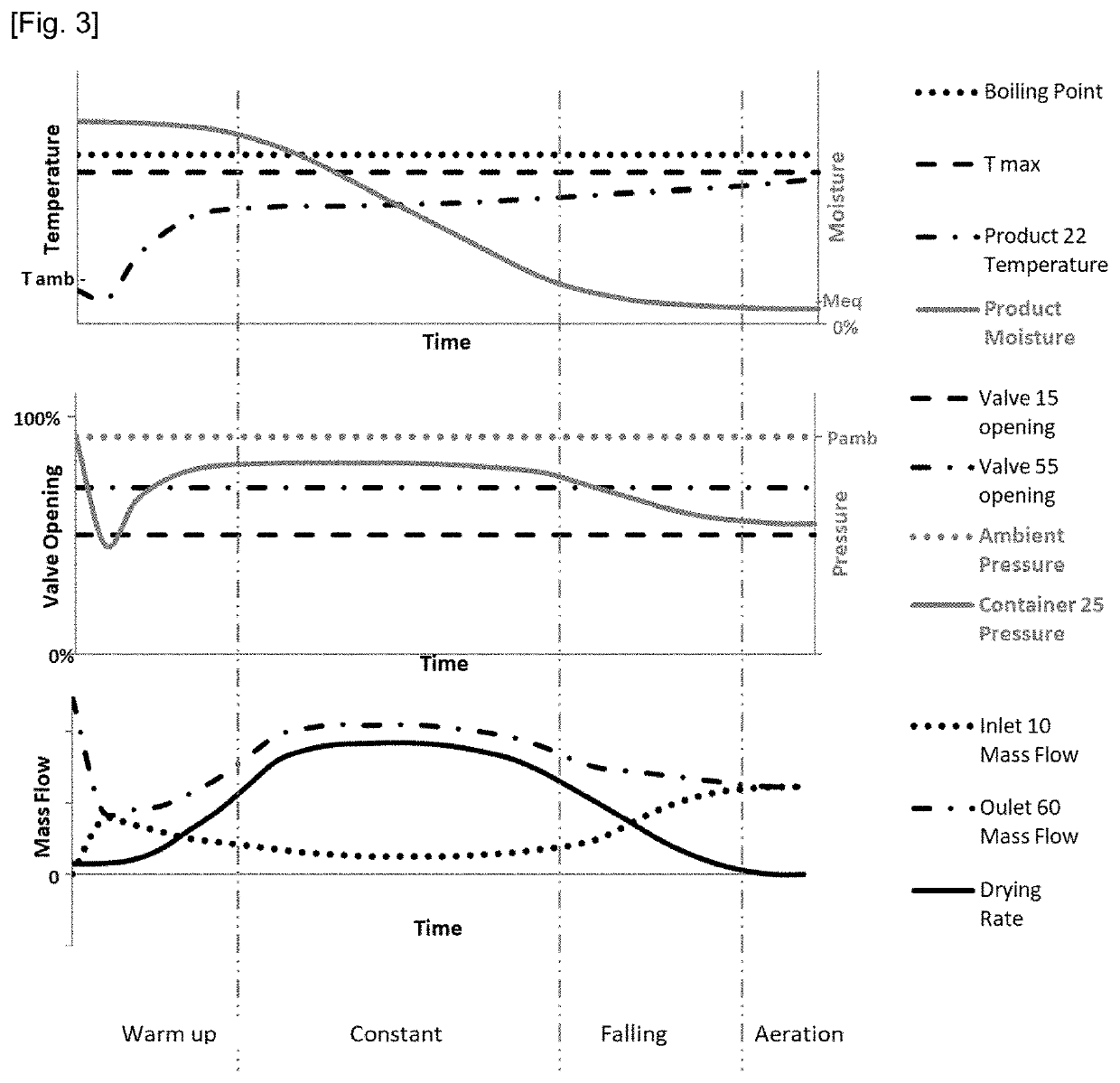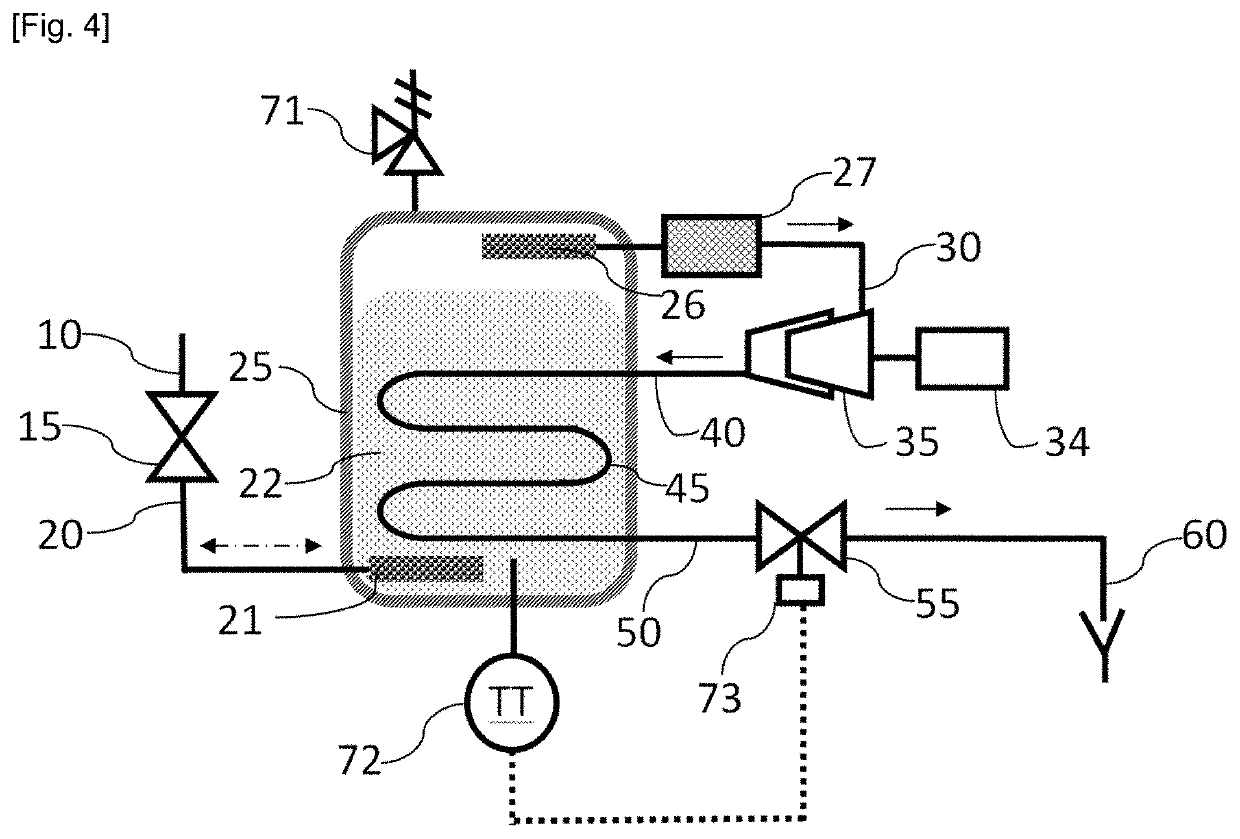Method for efficient and effective drying
- Summary
- Abstract
- Description
- Claims
- Application Information
AI Technical Summary
Benefits of technology
Problems solved by technology
Method used
Image
Examples
Embodiment Construction
[0044]FIG. 1 shows a preferred embodiment for performing the disclosed method in a batch dryer. The device includes a container 25 where the product to be dried 22 is placed inside. Inlet 10 allows the ambient air to enter, through valve 15 and conduit 20, inside the container 25; valve 15 restricts the amount of air flowing depending on its percentage of opening. The incoming air and product 22 are heated by heat exchanger 45 which causes evaporation from product moisture. The working fluid, air / vapor mix, is sucked up from container 25 through conduit 30 by compressor 35 which pressurizes the working fluid to be delivery to heat exchanger 45 through conduit 40; this pressurization raises the fluid temperature. Inside the heat exchanger 45, the pressurized and hot fluid transfers back its thermal energy to the product 22; this cools down the working fluid and generates water condensation. The working fluid leaves the heat exchanger 45 through conduit 50 to find the valve 55 where t...
PUM
 Login to View More
Login to View More Abstract
Description
Claims
Application Information
 Login to View More
Login to View More - R&D
- Intellectual Property
- Life Sciences
- Materials
- Tech Scout
- Unparalleled Data Quality
- Higher Quality Content
- 60% Fewer Hallucinations
Browse by: Latest US Patents, China's latest patents, Technical Efficacy Thesaurus, Application Domain, Technology Topic, Popular Technical Reports.
© 2025 PatSnap. All rights reserved.Legal|Privacy policy|Modern Slavery Act Transparency Statement|Sitemap|About US| Contact US: help@patsnap.com



